Blog - The Complete Guide to Selecting Cardboard Boxes for Your Products
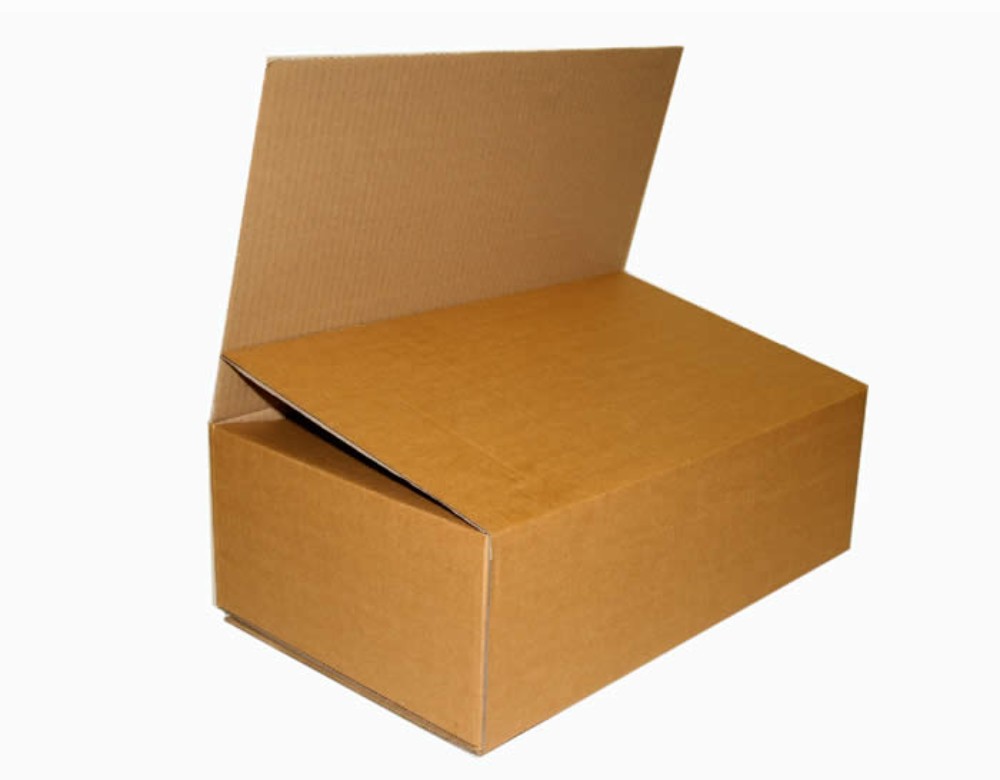
No matter what you’re shipping, whether it’s electronics, clothing or other goods, the right packaging ensures your items arrive safely, reducing the risk of damage or returns and keeping your customers happy.
In the UK, cardboard remains the most popular packaging material, with around 90% of orders shipped in corrugated cardboard boxes due to their strength, affordability and flexibility. In this blog, we’ll offer our top tips on how to choose the right cardboard packaging for your products, helping you balance cost-effectiveness, durability and sustainability in your operations.
- Product Safety: The right cardboard packaging provides the best protection for your products during transit. It can help to prevent damage and reduce the need for replacements or returns.
- Customer Experience: Well-packaged items improve the customer's unboxing experience, which has become central to consumer perception of brands.
- Cost Savings: Using the appropriate size and strength of cardboard minimises excess material and shipping costs, improving your overall cost efficiency.
- Sustainability: Many businesses aim to meet eco-friendly goals by choosing recyclable and renewable cardboard options, or cardboard packaging made with recycled materials, aligning with consumer demand for sustainable packaging.
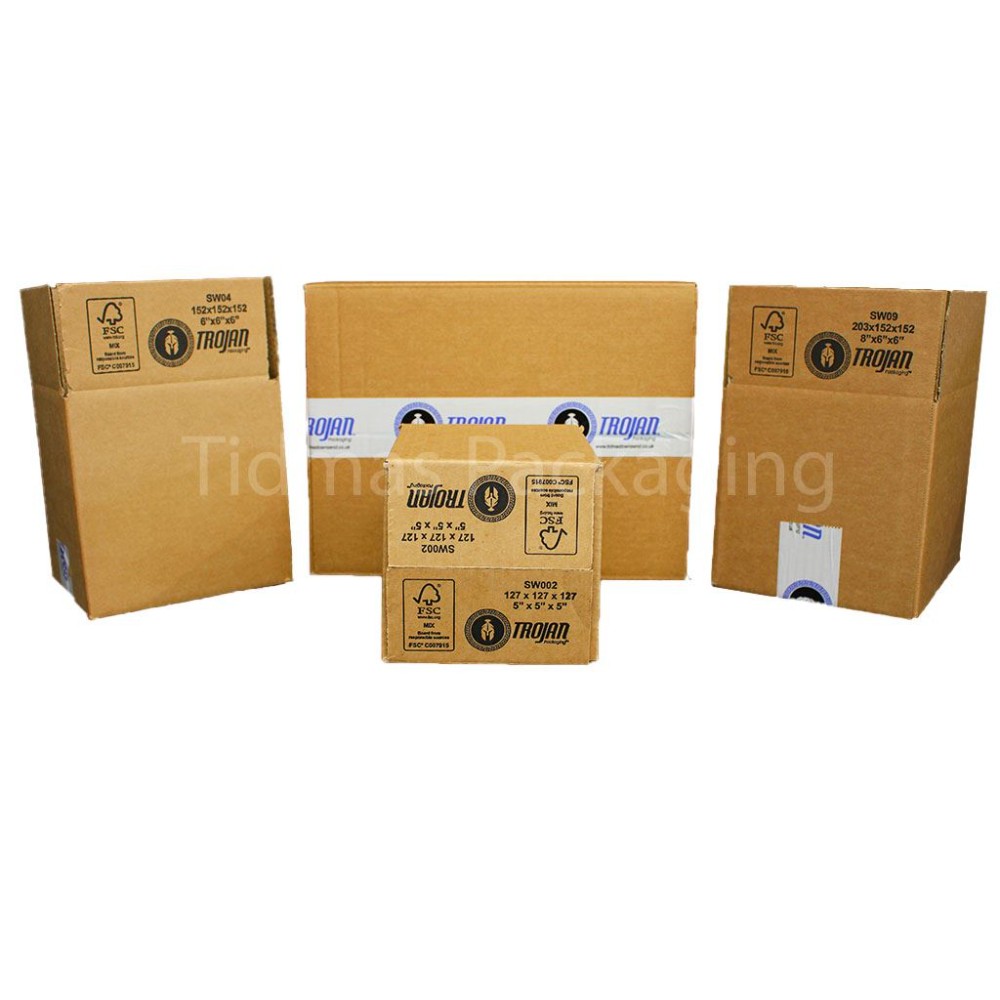
While cardboard boxes are the most common type of cardboard packaging, there are various options within the category. Here is an overview of your options:
- Single-Wall Boxes - Best for lightweight items such as clothing or accessories and ideal for everyday e-commerce packaging needs.
- Double-Wall Boxes - Suited for heavier or more fragile items like electronics or appliances. Use when you need extra protection during shipping.
- White Postal Boxes - Perfect for retail packaging or gifting when presentation matters and great for branded, attractive packaging.
- Brown Postal Boxes - Cost-effective and eco-friendly, commonly used for standard e-commerce shipments of non-fragile items.
- Custom-Size Boxes - Designed for products with unique dimensions or those requiring a tailored fit for better protection, they are ideal for businesses with irregular-sized goods.
- Re-Box Black E-Commerce Boxes - A premium, reusable option for eco-conscious brands, ideal for businesses looking to reduce their carbon footprint.
- Pallet Boxes - Perfect for bulk shipping or large, heavy items like machinery and often used in industrial and warehouse environments for secure shipping.
- Postal Tubes - Ideal for shipping posters, artwork or documents.
- Board Back Envelopes - Used for sending important documents, certificates or photos, keeping contents flat and safe from damage during shipping.
- Book Mailers - Specifically designed for shipping books and similar products, protecting corners and preventing damage during transit.
- Vinyl Record Mailers - These mailers keep vinyls safe from scratches and bending.
- CD-DVD Mailers - Ideal for media items like CDs or DVDs, they provide protection against impact and are designed to fit these specific products securely.
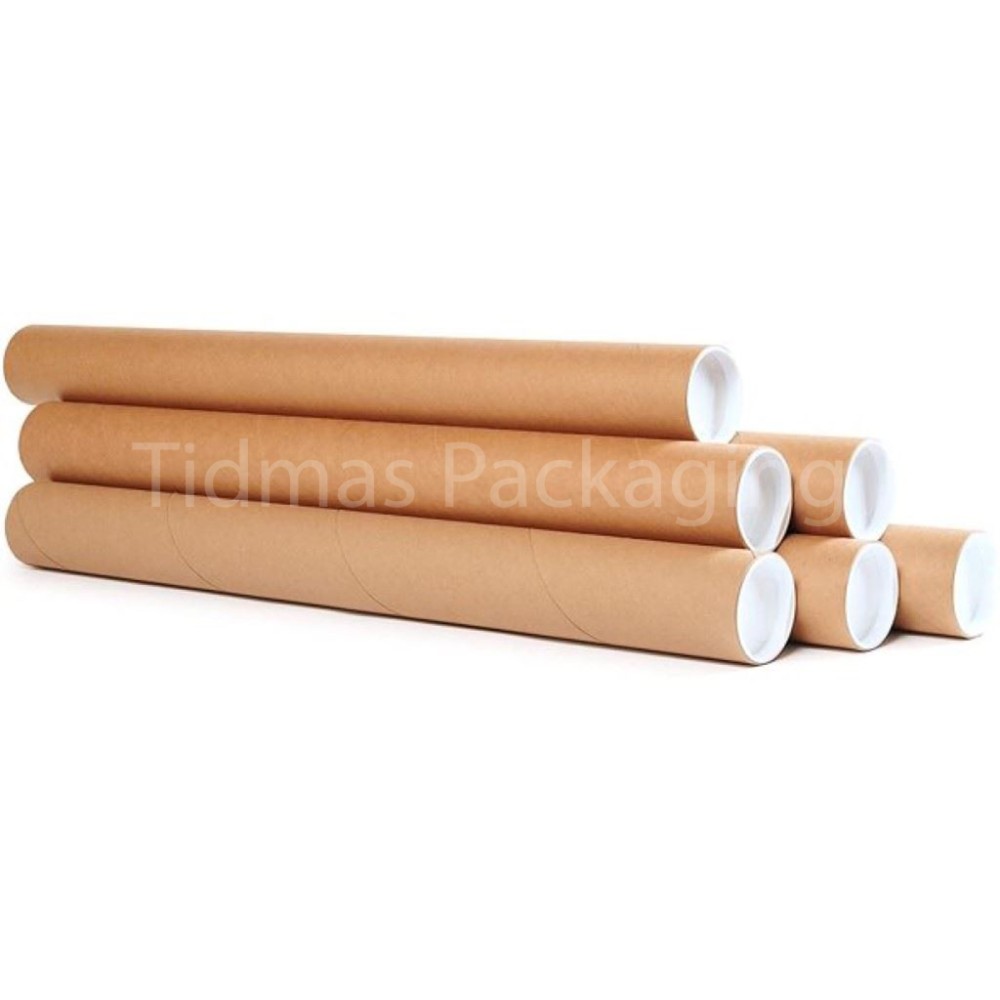
Single-wall cardboard is the most commonly used type for lightweight packaging. It consists of one layer of fluted paper sandwiched between two layers of linerboard. This simple design provides decent protection and cushioning for items which are less fragile.
- Best for: Lightweight items such as clothing, books and smaller electronics.
- Strength: Suitable for loads up to 10-15 kg, though this also depends on the product being shipped.
- Cost: Economical and widely available, making it a popular choice for e-commerce packaging.
- Applications: Often used for retail shipments, e-commerce deliveries and everyday packaging needs.
Double-Wall Corrugated Boxes
Double-wall cardboard is built for more robust packaging needs, with two layers of fluting and three layers of linerboard, offering more protection for fragile or delicate products.
- Best for: Heavier goods like home appliances and bulkier electronics, or fragile items which require more protection.
- Strength: Can hold up to 30-40 kg and withstand compression from stacking during transit.
- Cost: More expensive than single-wall boxes due to the added material, but provides better protection for heavier items, reducing potential damage costs.
- Applications: Used for shipping bulkier items or products that require extra cushioning and support during transit.
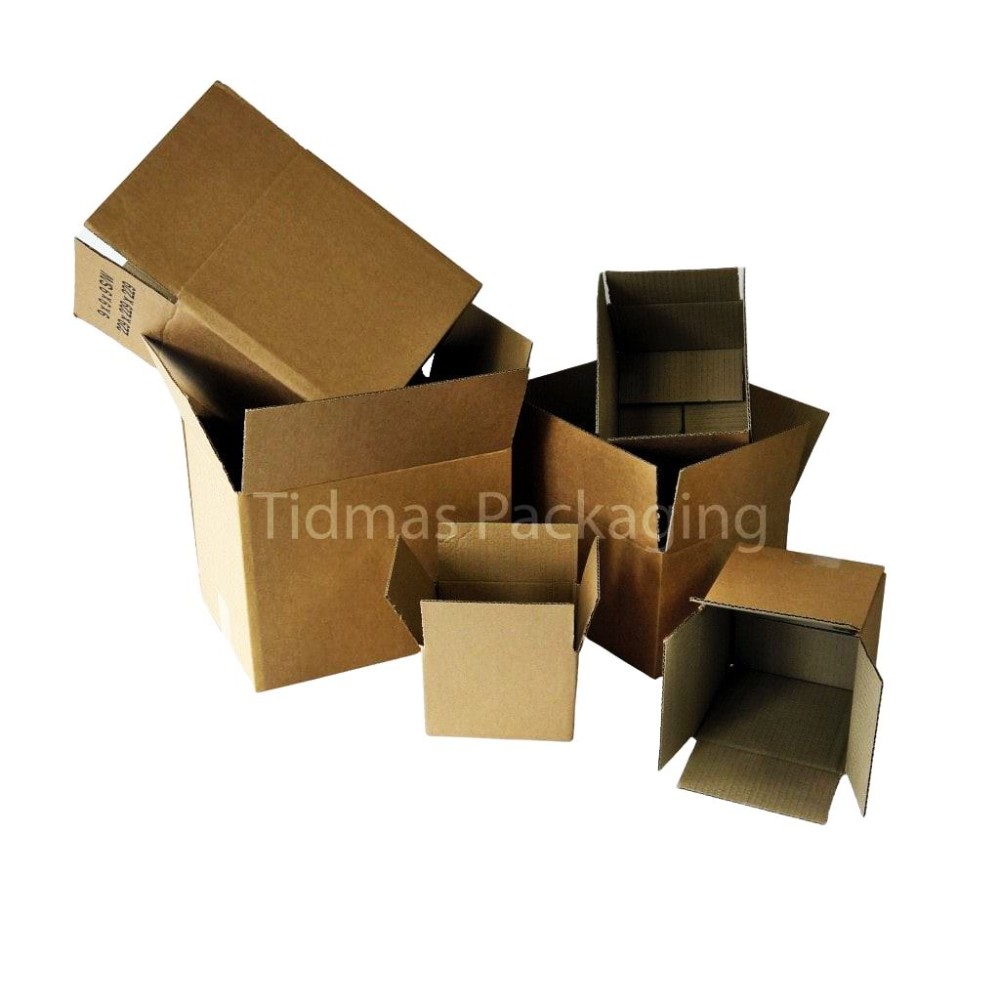
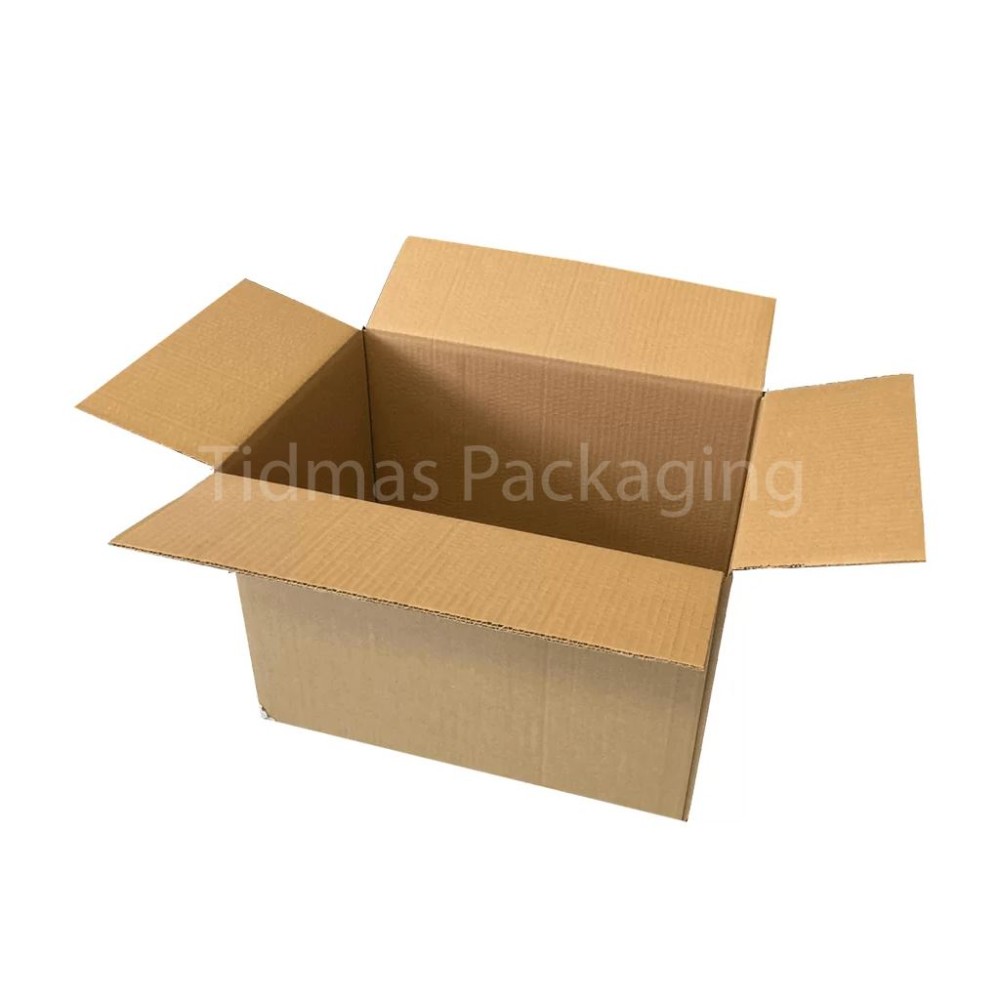
One of the factors that affects this is the type of fluting, which includes:
- E-Flute: Around 1-1.5 mm in thickness, E-flute is thin and lightweight, and best for small, less fragile items. It also works best for high-quality printing.
- C-Flute: Around 3.5-4 mm in thickness, C-flute is the thickest grade, offering maximum protection for heavy or fragile items. It tends to provide better stacking strength for lightweight products.
- B-Flute: Around 3 mm in thickness, B-flute is thicker and more rigid, suitable for medium-weight items. It’s the most commonly used fluting and can be used for die-cutting.
- BC-Flute: Flutes can also be combined for double-walled cardboard. BC flute is usually around 6-7 mm in thickness and is commonly used in shipping.
Other factors which make up cardboard’s board grade are the type of paper (such as Kraft or Test liners) and the paper weights, which are measured in GSM (such as 125 GSM and 300 GSM).
Understanding standard box sizes for shipping and how to measure them properly is key to success.
Standard UK Box Sizes
In the UK, there are common shipping box measurements that are frequently used across different industries for deliveries. These sizes typically accommodate a range of products, ensuring efficient use of space while keeping items secure. The dimensions refer specifically to the internal measurements:
- Small Parcel Boxes: Often used for e-commerce shipments and smaller products, these boxes range from 200 x 150 x 100mm to 300 x 200 x 150mm.
- Medium Parcel Boxes: For slightly larger or heavier items, these typically range from 400 x 300 x 300mm to 500 x 400 x 300mm.
- Large Parcel Boxes: Ideal for bulky goods, they can be 600 x 400 x 400mm and upwards.
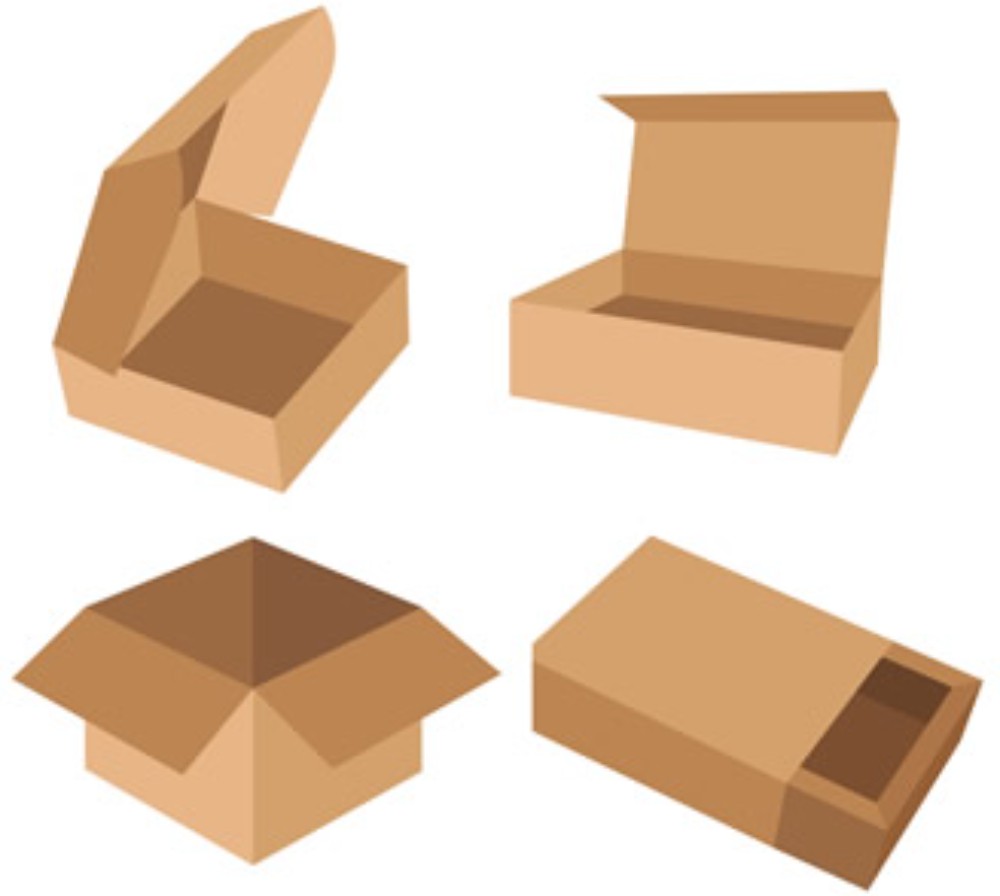
Measuring for Your Boxes Correctly
Box dimensions are typically measured as length x width x height (L x W x H). To ensure the correct size for your products, follow these steps:
1. Measure the Product: Measure the length, width and height of your product.
2. Add Cushioning Space: Add a few centimetres to account for internal packaging materials like bubble wrap or lose fill to protect your product.
3. Check the Outer Dimensions: Make sure the other dimensions of the box comply with any shipping restrictions and fit the standard parcel sizes for the courier.
If your products don’t fit into standard box sizes, consider custom-sized boxes. This allows you to tailor the packaging to your product, ensuring the best protection while minimising excess materials.
Custom-size cardboard boxes are especially useful for oddly shaped or fragile items, and for businesses that ship products with unique dimensions, custom cardboard packaging can be designed to provide optimal protection and minimise void fill.
At Tidmas Townsend, we offer 6 cardboard box styles in a range of board strengths and internal dimensions, with the help of our expert team to help you make your decision.
At Tidmas Townsend, we offer a wide range of customisable and eco-friendly cardboard packaging solutions and our team is ready to help you find the perfect fit for your products. Contact us today for expert advice and explore our range of cardboard packaging options.













